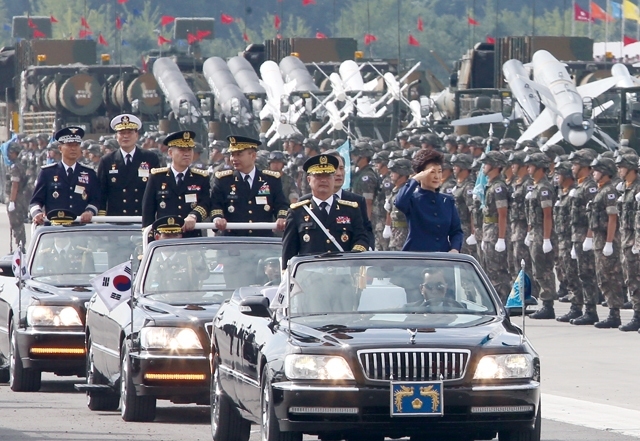South Korea plans to cut its standing forces from the current 640,000 to 522,000 by 2022, while increasing the ratio of non-commissioned officers with specific technical expertise and skills, the defense ministry said Thursday.
The defense reform plan for 2014-2030 takes into account the shrinking birth rate in a country where all able-bodied men must complete at least two years of military service to counter North Korea's 1.2 million strong army.
"Considering the decreasing number of available draftees, the ratio of soldiers will naturally go down unless they serve shorter terms," a senior ministry official in charge of the reform plan said. "The key is to recruit more non-commissioned officers, who are professional soldiers, to keep pace with the current trend."

Most of the reduction will come from the Army, which heavily relies on conscripts. The number will be cut from 498,000 to 387,000 in the next eight years. The manpower of the other branches will remain unchanged at 41,000 for the Navy, 65,000 for the Air Force and 29,000 for the Marine Corps.
By rank, the number of soldiers will shrink to 300,000 from 446,000, while the number of non-commissioned officers will increase to 152,000 from the current 116,000.
"The military plans to recruit more non-commissioned officers to train them as highly skilled forces," the official said. "The missions that need technical skills or high levels of experience will gradually move to non-commissioned officers from soldiers."
The military leadership has annually modified the reform plan since 2005, and the latest proposal was first announced by President Park Geun-hye, who took office in early 2013.
Under the plan, the Navy will establish a submarine headquarters as South Korea is expected to have over 20 submarines, including nine 3,000-ton submarines, after 2020.
The Air Force plans to set up a satellite surveillance unit under another plan to acquire five multi-purpose satellites capable of monitoring all parts of North Korea by 2022.
While the proposal also seeks to reorganize the military command structure to prepare for the transfer of wartime operational control (OPCON), it is subject to change as consultations have been under way to delay the 2015 deadline to handle threats posed by North Korea.
The Seoul government requested a delay in the transition after Pyongyang conducted its third nuclear test in February 2013. OPCON was handed over to the U.S.-led Allied forces after the outbreak of the 1950-53 Korean War.
Budget contraints remain an obstacle to recruiting more professional soldiers and acquiring advanced weapons such as an indigenous missile defense program to counter the North's nuclear and missile weapons.
"The defense budget needs to grow 7.2 percent annually to implement the long-term reform plan," a senior official said, which is higher than the average growth rate in past years.
The National Assembly has approved 35.7 trillion won ($33.3 billion) of defense spending for this year, a 4 percent increase from the previous year. (Yonhap)



















![[Today’s K-pop] BTS pop-up event to come to Seoul](http://res.heraldm.com/phpwas/restmb_idxmake.php?idx=642&simg=/content/image/2024/04/17/20240417050734_0.jpg&u=)